Use mobile, remote, horror experiences to keep connected to your guests and expand your brand.
By HaunTopic Radio
Each year, we should be adding something unique to our haunted attraction. We need to think outside the box to bring experiences to our guests that they crave—even if they don’t know it yet. A mobile, interactive, immersive, horror game could bring extra revenue to your haunted house business or any entertainment event—especially during these uncertain times.
What’s a mobile, interactive, immersive horror game? It’s episodic content (emails, texts, videos, etc.) created around the story of your attraction that takes place over a series of days or weeks that you charge people to participate in. It’s mystery combined with scary interactive combined with improvisation. Mobile, interactive horror builds your brand and keeps your guests engaged in the off season. They can interact with your event before it happens without leaving their house.
In a recent episode of HaunTopic, I spoke with Aidan Finnegan of Haunted Hills Estate Scream Park and Will Wakefield of Shock Theater about their interactive mobile horror experience, “Remote.” In this game, guests live in a world of horror and choices…all from the comfort of their living-room couch.
Listen to the Podcast
Key Takeaways:
• Use mobile, interactive horror to build your brand and keep your customers engaged in the off season.
• When guests are part of the story, that’s immersive horror. Remote horror takes that scenario and adds a digital element.
• Focus on what you can do right now to keep your haunt’s name out there and keep your audience and your community entertained.
• Work with somebody who’s done a remote horror experience before to save time, money, and effort.
• If you can’t open in October, you could offer a remote horror experience now, or you could make the remote horror experience part of your October event by getting guests engaged in the story before your haunt opens.
• After guests visit your haunt, continue the remote horror experience.
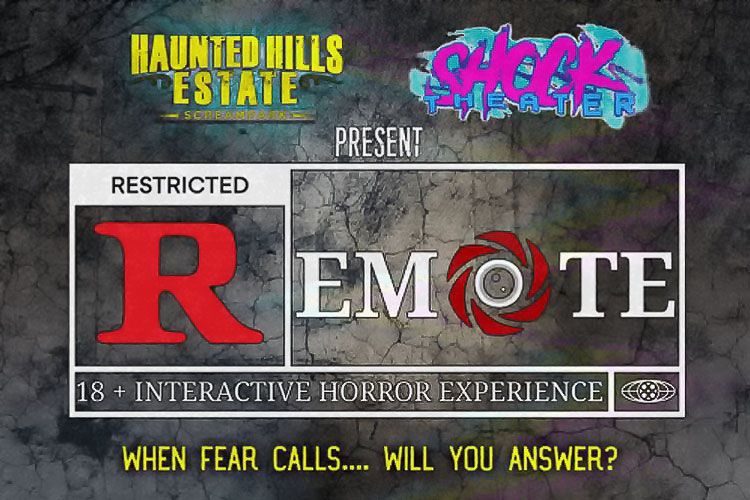
The Birth of “Remote”
In his second year at Haunted Hills Estate Park in Uniontown, PA, Aidan was approached by Will, who pitched the concept of doing a mobile horror experience and introducing it to the traditional haunt market. “I’ve been doing remote horror experiences for about the last four years,” said Will. “The one I’m doing with Aidan is my fourth. Josh Randall from Blackout Haunted House is credited with starting the immersive horror community, and he initiated remote horror experiences with ‘Blackout 21.’ The one Aidan and I are doing is a remake of the first remote horror experience I ever did. The second one was a feature-length, animated cartoon that was broken up into 31 videos. The third one, which I’m working on now, is about evil debt collectors.”
What is Mobile, Immersive Horror?
Will defined remote horror as a using an everyday device—like a phone, laptop, or computer—with social media to interact with people and weave a story over the course of a certain length of time. “It’s like role playing with a video-game orientation. It’s for people who want to get involved in a sphere,” he explained. “Immersive horror is everything a haunted house can never do or be. I’ve heard people say that going through a haunted house is like walking through a live horror film, but I disagree with that. A truly immersive horror experience takes hours to go through and immerses you in the environment. You’re not just walking through a space and people are popping out and scaring you. When guests are part of the story, that’s immersive horror. So, remote horror takes that scenario and adds a digital element.”
Aidan followed up by saying that remote horror is a revolutionary concept. “It’s a combination of your own adventure book, phone theater, an immersive horror story, and a video game. People who want to participate fill out a sign-up form on our website. They give us their name, phone number, email address, and, if they choose to, links to all their social-media accounts. The more information they give us, the more mediums we have through which to contact them. After that, they electronically sign a waiver giving their consent to participate in this type of community communication. Once that’s done, they receive an invoice. We don’t take money from anyone until they know and agree to what they’re getting into,” Aidan explained.
Each person who signs up becomes a character in the story. “For example, you’re a private investigator, and your first assignment is to find out information about a woman who’s apparently being held hostage in a mental institution by an evil doctor. You receive a prompt once a day, and you have 24 hours to answer or complete that prompt. If you don’t, you lose a life. If you lose three lives, you’re out of the game,” said Aidan.
Will pointed out that no one has the same experience, and, the more people that sign up, the more fun it becomes. “There may be points in time where you might get information that nobody else has, and you’re told not to give this information to anybody else. It’s specifically for you. So, the story is kind of like a river—things coincide and then they diverge,” he said.
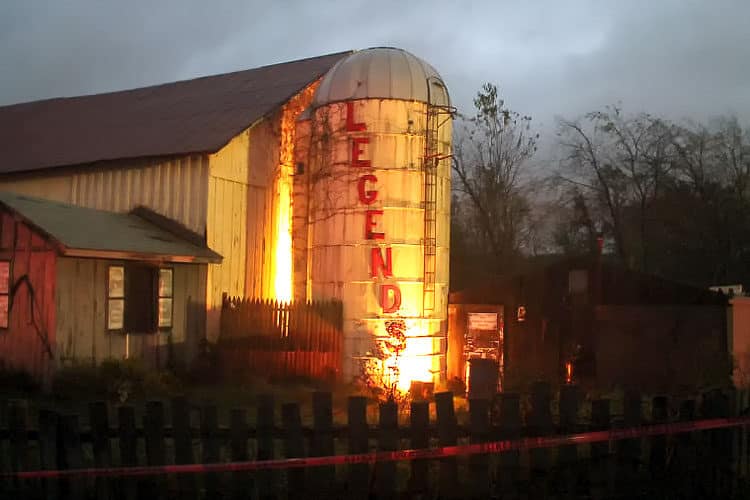
Will observed that during the current pandemic, he’s seen people in the haunted-attraction industry freaking out about what they’re going to do if they can’t open in the coming Halloween season. “My advice is to focus on what you can do right now to keep your haunt’s name out there and keep your audience and your community entertained. Think about what you can do to market yourself and extend your marketing beyond just the two or three months before the Halloween season. What better way to do that than a remote horror experience? Right now, haunted houses can create their own remote experience as a way to market themselves and stay front and center with their community. The overhead to do this is really low. It’s more manpower than anything else. What I mean by that is you’ve got to have a creative mind to pull this off, and you need an energetic and inventive content creator, because you need a lot of content—up to 30 days’ worth,” he explained. “So, if you can’t build a set right now, why not create a story that happens in people’s minds by building your story with video, emails, and phone calls? They create the story in their head.”
H.P. Lovecraft’s philosophy was not to tell people too much. Will thinks telling too much is a problem in horror and haunted houses—everything is so in your face. “Haunted houses for the general public are fine, but if you’re trying to attract those hardcore horror fans and haunters who want to experience something different, this is a perfect opportunity to introduce them to something that they’ve probably never tried or never even thought to try,” said Will.
Nobody knows if their haunt will be able to open in October, so what do we do in the meantime? “If you can’t open in October, you could offer a remote horror experience now, or you could make the remote horror experience part of your October event by getting guests engaged in the story before your haunt opens. You have an opportunity to tell your fans or prospective guests way more about the backstory of your haunted house. They can become involved now, and they’ll not only come to your haunt but they’ll stay a fan forever if you maintain good content in your remote experience,” Will stated.
When it comes to creating a remote horror experience, Will noted that you could preplan a month-long show or you could create it day by day. “The second show I did was 31 days long. It was a stop-motion cartoon in video form that was in the animation style of South Park. I spent 14 hours every day animating that cartoon. It would happen in real time, and all the data I had from the day before would coincide with what I made that day.”
Will strongly advised that haunts work with somebody who’s done a remote horror experience before. “It’s a small community that knows how to produce these things,” he noted.
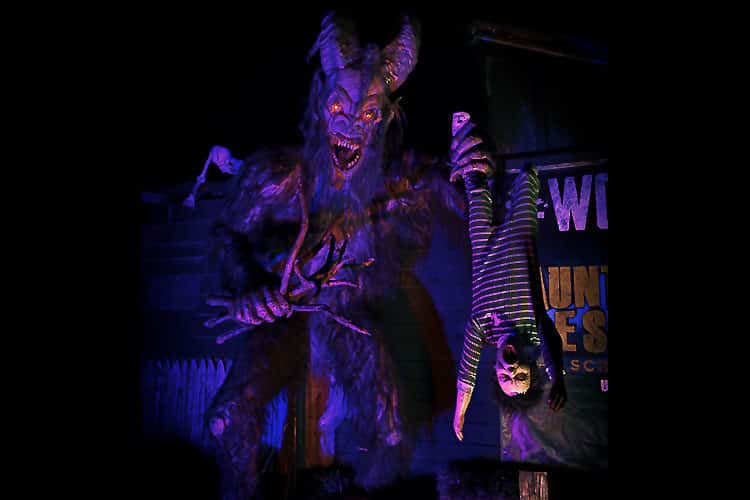
How People Join the Immersive Remote Horror Experience
People sign up for the experience and pay for it before it begins. “We give them a grace period of a few days during the first week to pay for that experience, but, after that point, it’s too late to join,” explained Aidan. “However, we’ll be doing more and more shows with different storylines and different mediums of communication. We hope the word gets out, because the more people that sign up for those shows, the more things we can do.”
It often happens that Aidan and Will have content prepared, people sign up in the first week, and then other people hear about it and want to sign up for the second week. “If you already have your content ready to go, people can continually sign up. You can overlap as much as you want, but again, you need to have somebody on board who knows how to do this. Also, there’s a reasonable limit for the number of participants. I wouldn’t have 200 people signed up for one show, because it might lose the mystique,” said Will.
Remote Experiences Attract a Global Audience
If your concept is cool enough, the best part about remote horror experiences is that people outside your local area will sign up for it. “The show I’m running right now has people signed up from all over Europe, the United States, Mexico, and Canada,” said Will.
In the week previous to our podcast, three haunted houses contacted Aidan, and a few big names in the haunted attraction industry have talked to him about licensing this remote horror experience idea and doing it in their markets. “I think this might be the next big thing for the haunted-attraction industry in general, especially this year. In 2012, when The Walking Dead was huge, everyone was doing zombies. This might be the next zombies,” he said.
The way Will views it, the remote horror experience is a collaboration between the community and the haunted-attraction industry. “It’s our way of saying, ‘Hey, look at what we’re doing. We’re here to help you.’ We don’t want people to struggle mentally, and we don’t want them to struggle financially. The 30-day remote horror experience costs thirty bucks—a dollar a day. That’s not a lot of money,” he observed.
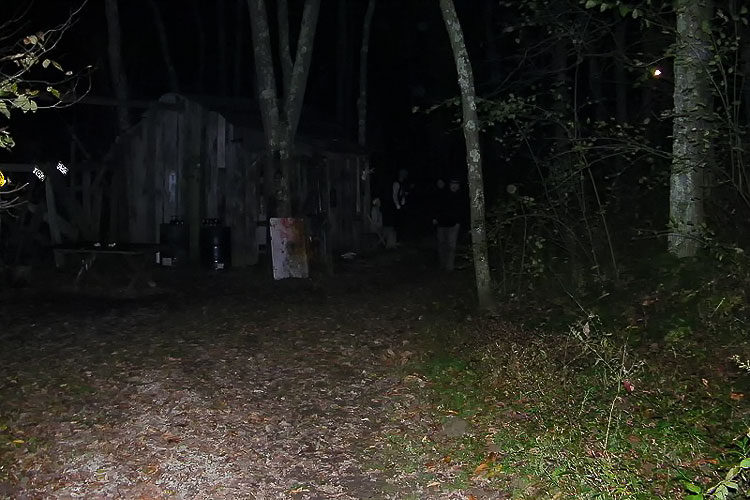
Marketing Tips and Strategies for this Haunt Season
As far as marketing goes—this year or any year—Will believes the key is knowing your community, doing things for your community, and becoming integrated into your community. “You know the pitfalls and the pros and cons of your community. Most of your guests are going to be local folks, so focus on becoming the talk of your town. One thing I always tell haunted houses is, if they want to make a trailer for their haunt, don’t make it longer than two minutes. I won’t watch a two-minute trailer. Keep your videos short—like 15 or 20 seconds.”
Remote horror experiences are an excellent way to get a lot of people from your area familiar with your haunt. “Right now, people are bored. Cabin fever us setting in, and they’re starting to go stir crazy. So, give them something to do, and put your name on it. That’s my best marketing advice right now, because we don’t know what’s going to happen in October,” said Will.
If your haunt does open in October, Will advised setting up marketing guidelines now. “You’ve got to stay in people’s face. They need to hear from you every day, so they know that in October, you’re going to be sanitized and you have their safety in mind. The best marketing you could possibly do right now is to keep your name out there by creating content that people can interact with and have fun with that will build up to your October season.”
Even if your haunt isn’t able to open, keep producing creative, remote, horror experiences. “Go further than that and make remote horror experiences that have VR components,” Will suggested. “If you have people that work for you and know how to do VR and video work, you’re halfway there. It’s just a matter of having people who are interested in doing it and want to see it happen.”
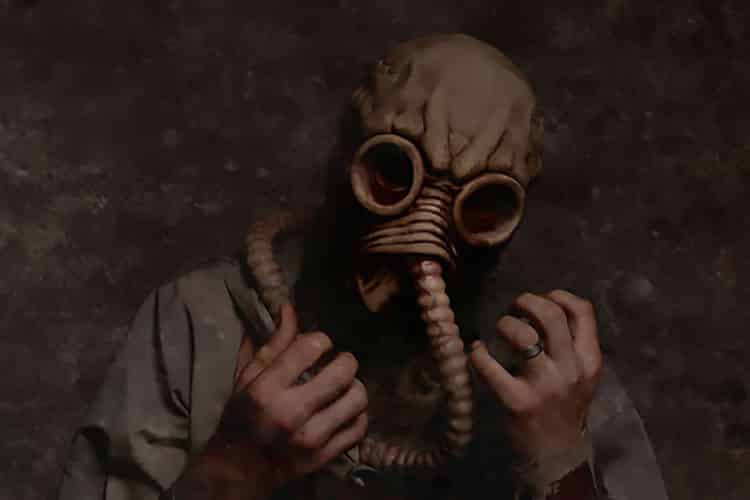
Will also offered the advice that haunted attractions should focus on advertising and put money into a war chest. “You need to advertise and let people know the changes you’ve made in response to the pandemic and how you’re going to successfully compete against an election and all the other competition that haunts will face this year. Be fiscally conservative and smart with your money—but, when it comes to advertising, spend your money liberally. Often haunted houses spend a ton of money on fixing and adding new things to their show, but then they don’t have enough money to advertise it. You did all this beautiful work, but what good does that do you if you can’t get people to come see it? So, put money away for advertising. No one’s gonna market your show better than someone locally. They know the area, they know the people, they know their vernacular. You can work with nonlocal people who are really tuned in to the industry or you can work with local people who are also tuned in to the industry. There are many people like that.”
Aidan’s marketing advice for this year was to think completely outside the box. “Do something different in your haunted house that’s creative, and call yourself the new breed of haunted house. Do something that’s never been done before in your area. Hit the innovation aspect, because people will want to be the first to experience this new form of haunted house,” he explained. “People also want something they can go to with their friends and have a phenomenal experience. That might mean adding a midway to your show or a vendor area at the end or an escape room. Concentrate on the value of your show. You might have a 45-minute walkthrough with plenty of detailed sets and cool, 50-foot animatronics, but what are people going to do afterwards? I’d rather go to a haunted house that’s divided into three, 15-minute attractions and have a bunch of stuff to do at the end as well. I’ll spend an extra $5 on a VR, 5-D, immersive experience or an awesome photo op. I’ll put that photo on Facebook, 20 of my friends will see it, and they’ll come to your show. Think outside the box, and don’t be afraid to be sensational to differentiate yourself from the competition.”
Will summed up the “think outside the box” idea with this statement: “Be the purple cow. To stand out from the competition, you have to be that purple cow. Haunted houses always need to deal with concerts and other forms of entertainment. The number of people that go to haunted houses is still small—it’s a niche of a niche. Also, it’s still predominantly white-people entertainment, and that will be the case until the demographics change. Even when they do, you still need to be the purple cow and stand out. In 2020, standing out will matter more than it ever has, because we want people’s money, and people might only go to one Halloween experience this season.”
Besides being a great lead-in for your haunt, a remote horror experience can also serve as a way to keep guests connected after they visit your attraction. “Right now, I’m working with Fright Trail in Louisiana to create something that guests interact with in person at the haunt that then becomes a remote experience after they leave,” said Will. “They can pass that remote experience on to a friend or someone who’s never been to that haunt or any haunt. It’s like the experience is stalking the guest after they leave the attraction, and they can pass it on to get rid of it. You have the opportunity to allow your guests to pass something on by giving someone else the opportunity to visit your haunt, and they can pass it on to somebody else.”
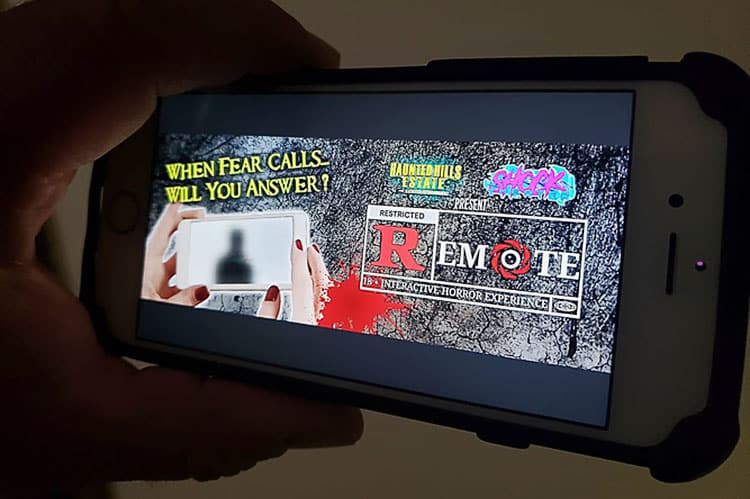
Right now, if you aren’t working, make work for yourself, suggested Will. “Keep your mind working, and continue to creatively improve yourself and what you love. Read, and watch the most obscure horror films you can find, because there will be something in there that inspires you. Don’t stop being creative. That will kill the kid inside of you. And if you kill the kid inside of you, what are you doing this for? The only reason we create what we do is to keep that person alive. The adult who creates art now is the kid that never grew up. That’s what will separate you from everybody else. Everyone else grew up, but you don’t have to. What you do now will keep you sane so that, when things get rolling again, you’ll be ahead of everybody who hasn’t been creating, and you might generate some income in the meantime. Keep getting your name out there. Just keep it going,” urged Will.
Now is the time for all of us to look at our haunted house or our Halloween event and figure out what we can improve and do differently. “It’s necessary to keep evolving. If you do that in the right area, have the right marketing campaign, and people understand what you’re doing, you’ll be successful. It’s just a matter of putting the effort and time into it,” said Will.
When it comes to evolving your haunt, Will recommended taking a Hegelian approach. “When I was a kid growing up in the late ‘80s and early ‘90s, haunted houses were super theatrical. There were barriers you couldn’t cross, and there were scenes happening ahead of you. Go back in time and consider aspects and strategies that might work now. This is called the Hegelian Dialectic. Hegel’s theory was that, to make society better now, we might have to go back and bring in something from the past and rearrange what we’re currently doing to make it work for us. I apply Hegel’s theory a lot to what I’m doing now, such as remote experience, and it works.”